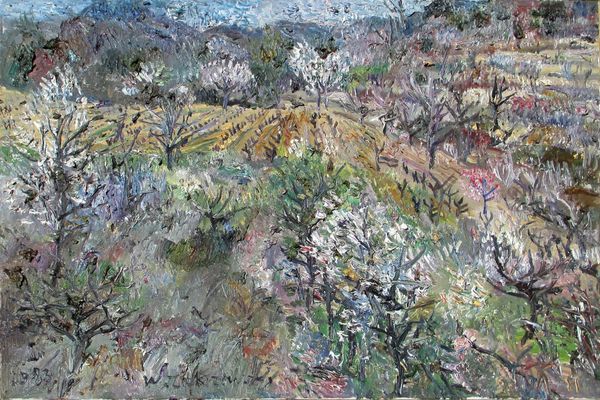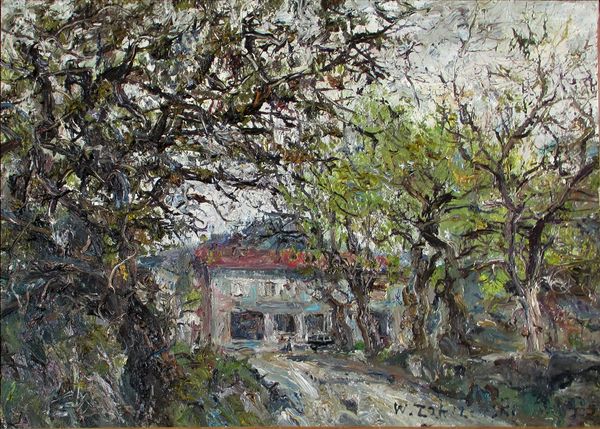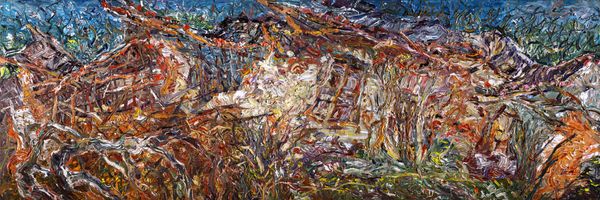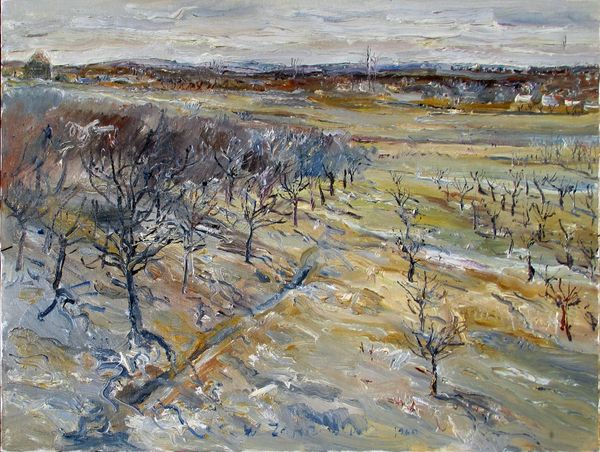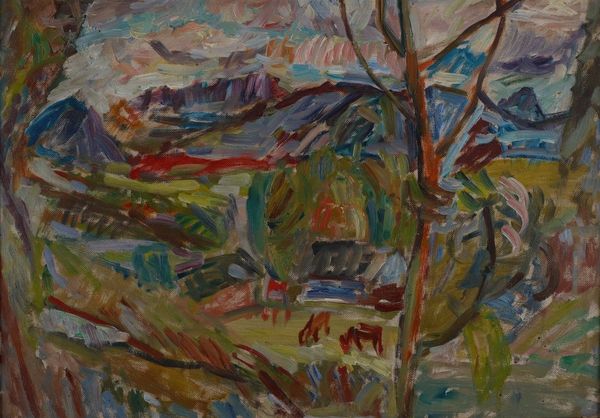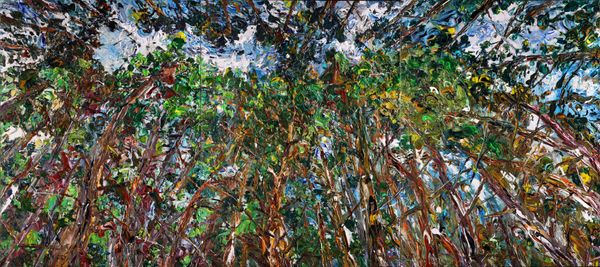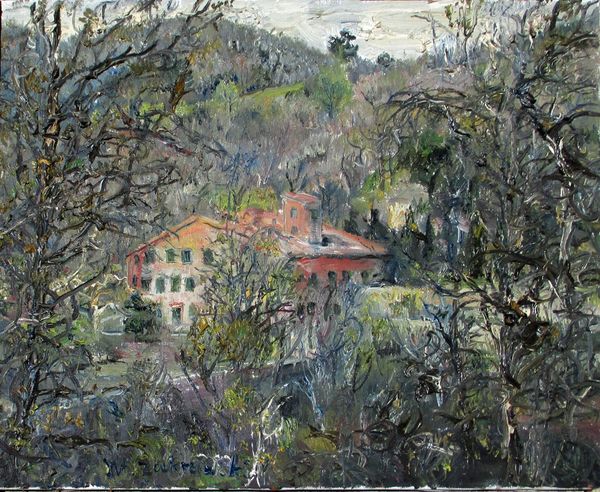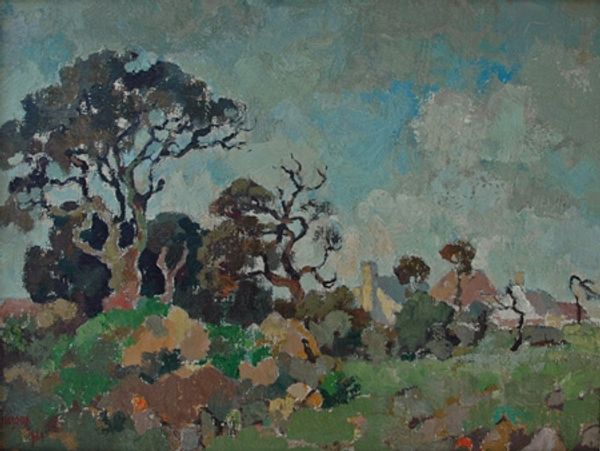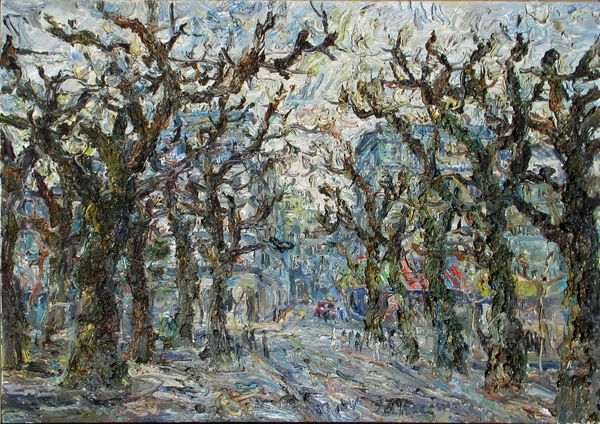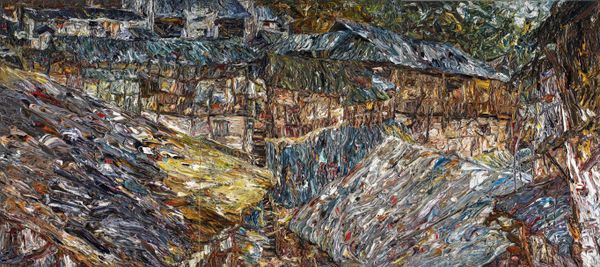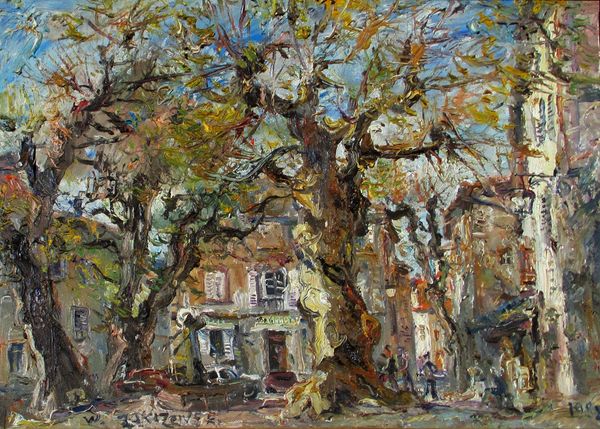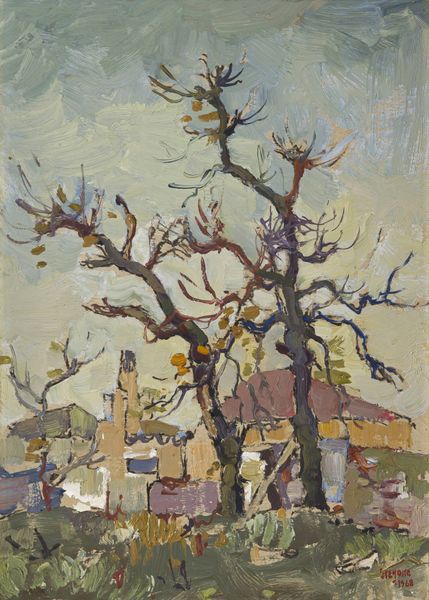
Dimensions: 50 x 61 cm
Copyright: Private collection copyright
Editor: This is "Chateaudouble" by Włodzimierz Zakrzewski, painted in 1973. It seems to be an oil painting, and the impasto technique gives it so much texture. I’m initially struck by how the foreground almost obscures the village scene behind it. What can you tell me about it? Curator: Let's consider Zakrzewski's process here. Notice the heavy impasto, the layering of oil paint. This isn't just about depicting a scene; it’s about the materiality of paint itself. He's practically sculpting the landscape. What impact do you think the choice of oil paint had versus other mediums such as watercolor, tempera, or acrylic paint? Editor: I see. With oil paint and its slow drying time, he was able to build up layers, creating a really tactile surface and manipulate it much longer than with fast-drying alternatives. What would the labor have been to create these heavy impasto surfaces? Curator: Exactly! The laborious application, the sheer volume of paint used – these choices speak to an interest in the physical act of painting. Think about the availability of materials too in the context of post-war Poland. What might the act of acquiring such materials have meant? The creation of such physical work could also be an outlet for frustration. How do the constraints and realities of daily life get played out in Zakrzewski's rendering? Editor: It's fascinating to think about the social context shaping the artist’s practice. Perhaps the expressive brushwork and the obscured view are a reflection of the political climate? Curator: Precisely. Considering art as a product of labor and access to materials opens up entirely new interpretations, doesn't it? What started as an interest in composition transforms into questions of social and political realities. Editor: Absolutely. I’ll never look at impasto the same way again.
Comments
No comments
Be the first to comment and join the conversation on the ultimate creative platform.
